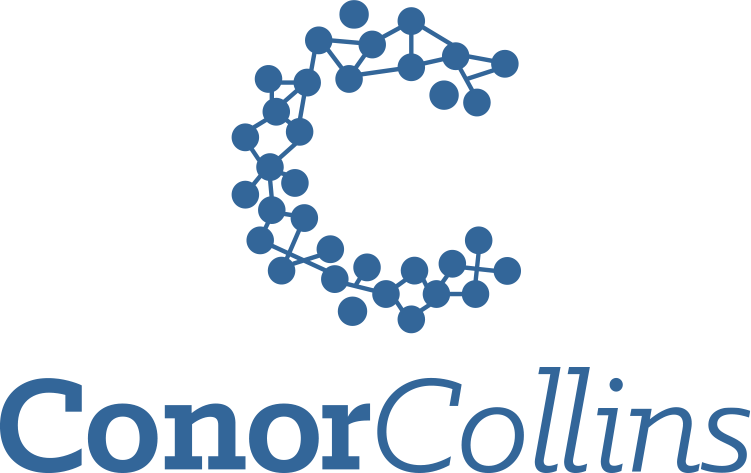The topic of stress is one at the forefront of concussion management. Whether it’s sub-symptom physical exertion or cognitive stressors, it appears that addressing these two components of stress can lead to positive outcomes for people who have suffered from a concussion. One of the difficulties with stress is it’s hard to manage. If you think about the word “stress”, how do you perceive it? When stress is often discussed, it’s talked about being either positive (eustress) or negative (distress). The difficultly with these assignments is variability in perception of eustress or distress across a group.
It’s also particularly difficult to quantify stress. When I ask people in the clinic if they are stressed, I often get the same response: “work”. If I ask follow-up questions as to why work might be stressful, people find it hard to pinpoint the area which may be causing them stress, or whether work is actually the root of their stress. I’ve been fascinated with stress and how we perceive it and attempt to quantify it. One tool that is becoming more prominent in both research and every day lives is the use of heart rate variability as a measurement of stress. If you own an Apple Watch, Oura Ring, Gamin Watch, Whoop Strap or many of the other wearable technological devices that now exist, heart rate variability is a key component of them.
So what is heart variability? Our hearts respond to stress. For example, if we run uphill our heart rate increases to adapt to the imposed demand on the system. Conversely, if we are in a perceived relaxed state our heart rate reduces. Not only do we have changes in heart rate, but have changes in the time between heart beats. One heart beat can be measured as a series of events known as the PQRST complex. These make up the series of beeps and alternating waves you see on the monitors during your favourite episode of Grey’s Anatomy. Heart rate variability is a measure of “the variation in time between 2 consecutive heartbeats or R–R intervals of a cardiac cycle, provid[ing] insight into the connection between the autonomic and cardiac systems, and is a reliable marker of autonomic dysfunction (Perturb et al. 2018, Conder et al. 2014, Wandel et al. 2019, Senthinathan et al. 2017, Biswas et al. 2000, Buitrago-Ricaurte et al. 2020 & Evans et al. 2013). In short, it takes information from the heart beat and measures how we are managing physical and mental stress. This can be done over the course of a day, week, or months.
The use of this tool has long been used in professional sports. HRV has become a staple for many professional soccer teams, to help manage the condition of athletes and recovery across a season. Through its use in professional sports, I have taken a particular interest in its potential uses during concussion recovery. The challenging thing about concussion recovery is many of the symptoms experienced are subjective in nature. Each experience is individual to the person going through it, which makes the inclusion of objective, or measurable data challenging in a person-centred treatment plan.
Due to its utility in the measurement of stress, HRV has been proposed as a means of measuring physical and cognitive stress when returning from a sport-related concussion (Senthinathan et al. 2017, Anderson et al. 2020 & Paniccia et al. 2018). As the use of sub-symptom cardiovascular exercise has become a popular modality to help a person return to their pre-injury status (McCory et al., 2016), it’s important to consider an accurate means of measurement in order to better tailor a person’s treatment plan. In a recent paper titled, “Heart Rate Variability as a Reliable Biomarker Following Concussion: A Critically Appraised Topic” (Harper et al. 2022), the authors looked at the available evidence for the use of HRV data during the return to sport phase post-concussion.
During the literature review, the authors found 3 studies that met their inclusion criteria. Their inclusion criteria included: HRV as an objective metric to assess autonomic system recovery, acute concussion is no longer than 1 year from the concussive event, subjects are young adults (eg, between 13 and 30 years of age), defined operational term for concussion, published in the last 5 years (2017–2021), based on the 2018 systematic review & Level 2 evidence or higher (Harper et al., 2022).
The study showed that early in the concussion recovery process, HRV metrics appear decreased but improved as subjective reporting of symptoms also improved. Although the quality of evidence for the use of HRV as a post-concussion measurement tool is currently low, it appears to be consistent and shows preliminary evidence as a potential tool used in concussion recovery (Harper et al., 2022).
So what does this mean for people that help others in recovering from a concussion? The use of HRV may be something to help track progress. While the evidence is still preliminary, HRV devices may be something that become more evidence-based as further research is done.
The primary barrier to entry for clinical use is price and utility. If a person already has a wearable tech device that measures HRV, this may be added to the care program as a means of gathering information. While this may be useful, it should be noted that no clear conclusion regarding concussion recovery can be made through the use of measuring HRV as a stand alone metric. If the person does not own a wearable tech, the clinician has the option to have an HRV measurement device in their clinical space. This raises several other questions regarding the frequency of measuring HRV, best practice for time of day measurement, the non-injury related factors that influence HRV and so much more.
I enjoyed reading this paper. It’s interesting to see as technology advances its potential utility in helping people monitor their concussion recovery. While it’s cool and exciting, research in this area still has a long way to go.
If you’re looking to grow your understanding of concussions and how to assess, treat, and rehabilitate this often daunting injury- registration is now open for the October 2022 course! Link here:
References
Anderson FL, Hellwinkel JE, Montjoy M, et al. Change in heart rate variability after concussion in a collegiate soccer player. Neuro- trauma Rep. 2020;1(1):88–92. PubMed ID: 34223534 doi:10. 1089/neur.2020.0003
Biswas AK, Scott WA, Sommerauer JF, Luckett PM. Heart rate variability after acute traumatic brain injury in children. Crit Care Med. 2000;28(12):3907–3912. PubMed ID: 11153634 doi:10.1097/ 00003246-200012000-00030
Buitrago-Ricaurte N, Cintra F, Silva GS. Heart rate variability as an autonomic biomarker in ischemic stroke. Arquivos de Neuro-Psiquia- tria. 2020;78(11):724–732. PubMed ID: 33331466 doi:10.1590/ 0004-282×20200087
Conder RL, Conder AA. Heart rate variability interventions for concussion and rehabilitation. Front Psychol. 2014;5:890. PubMed ID: 25165461 doi:10.3389/fpsyg.2014.00890
Evans S, Seidman LC, Tsao JC, Lung KC, Zeltzer LK, Naliboff BD. Heart rate variability as a biomarker for autonomic nervous system response differences between children with chronic pain and healthy control children. J Pain Res. 2013;6:449–457. PubMed ID: 23788839 doi:10.2147/jpr.s43849
Harper BA, Milner DG, Parcetich K, Price J. Heart Rate Variability as a Reliable Biomarker Following Concussion: A Critically Appraised Topic, September 2022. J Sport Rehabil. 2022;31(7):954-961.doi: 10.1123/jsr.2021-0422
McCrory P, Meeuwisse W, Dvorak J, et al. Consensus statement on concussion in sport-the 5(th) international conference on concussion in sport held in Berlin, October 2016. Br J Sports Med. 2017;51(11): 838–847. doi:10.1136/bjsports-2017-097699
Paniccia M, Verweel L, Thomas SG, et al. Heart rate variability following youth concussion: how do autonomic regulation and concussion symptoms differ over time postinjury? BMJ Open Sport Exerc Med. 2018;4(1):e000355. PubMed ID: 30305921 doi:10.1136/bmjsem-2018-000355
Pertab JL, Merkley TL, Cramond AJ, Cramond K, Paxton H, Wu T. Concussion and the autonomic nervous system: an introduction to the field and the results of a systematic review. NeuroRehabilitation. 2018;42(4):397–427. PubMed ID: 29660949 doi:10.3233/NRE- 172298
Wandel SE, Sulak T, Willoughby DS. The effects of including aerobic exercise in the treatment of protocol of concussions: a systematic review and meta-analysis. Int J Kinesiol Sports Sci. 2019;7(4):33. doi:10.7575/aiac.ijkss.v.7n.4p.33
About the Author
Conor’s Sports Injury Therapy background has earned him a growing reputation in the professional sports industry. Conor has consulted for athletes in the NHL, NCAA and IHHF and he was a therapist at the 2015 Pan AM games in Toronto.
When he’s not at the clinic, Conor’s teaching at Mohawk College in the Massage Therapy program or teaching his course “Understanding the Complexity of Concussion” internationally. Conor has written for a variety of magazine and news outlets, as well as participated as an expert at a number of internationally-recognized conferences.



Recent Comments